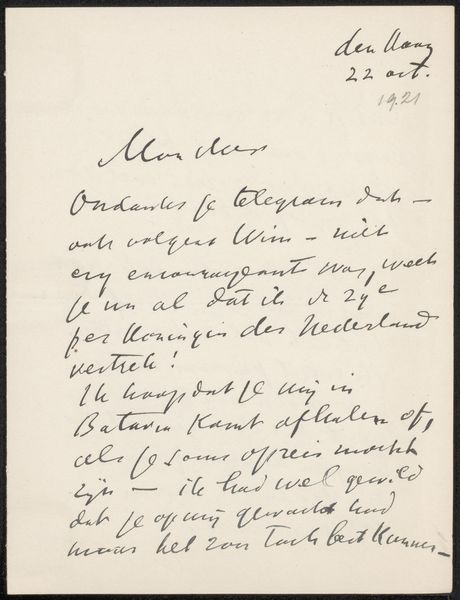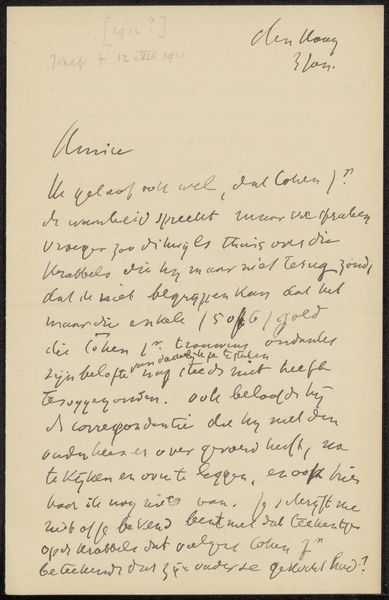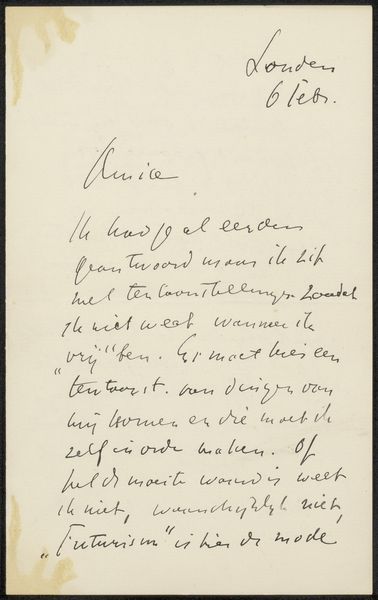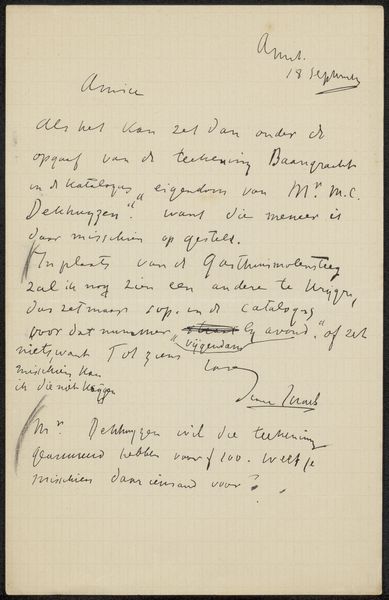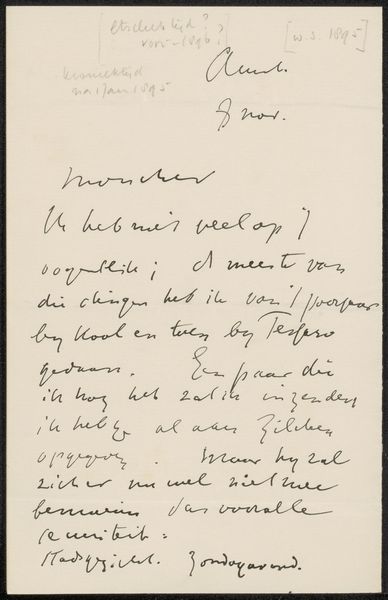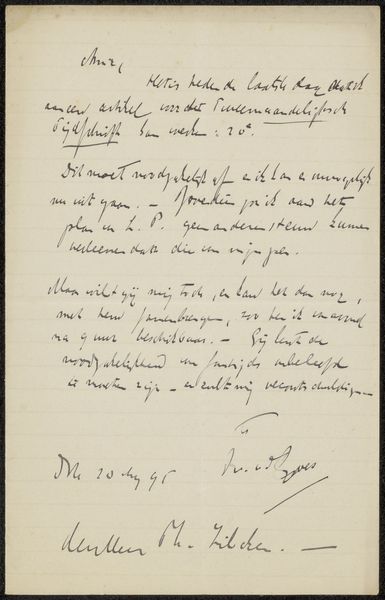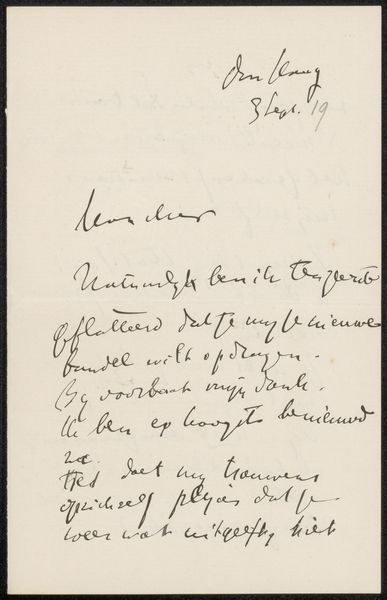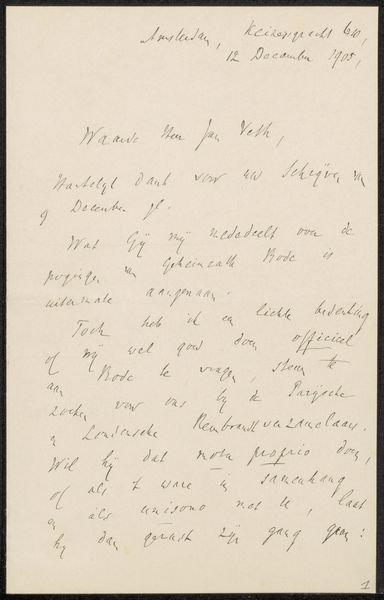
drawing, paper, ink, pen
#
portrait
#
drawing
#
comic strip sketch
#
hand-lettering
#
old engraving style
#
hand drawn type
#
paper
#
personal sketchbook
#
ink
#
hand-drawn typeface
#
ink drawing experimentation
#
pen-ink sketch
#
pen work
#
sketchbook drawing
#
pen
Copyright: Rijks Museum: Open Domain
Curator: Ah, here we have "Brief aan Jan Veth," a work that likely originated between 1875 and 1925, penned by Isaac Israels. It's currently housed here at the Rijksmuseum. A simple drawing using ink on paper. Editor: Well, my first impression is… intimacy. There's a vulnerability in handwriting. The flowing script hints at thoughts spilled directly from mind to paper. It feels almost forbidden to be privy to it, don't you think? Curator: Indeed. Its formal structure, typical of epistolary forms, combined with Israels’s characteristic free-flowing lines, presents a study in contrasts. Note how the density of the ink varies, creating a tonal range that adds depth despite the simplicity. Semiotically, the handwriting is an index—a direct trace of the artist's hand and thought processes. Editor: The quirks of his handwriting, the slant of certain letters... It really brings him to life, doesn't it? Like a secret code only the recipient could fully decipher. I wonder what Jan Veth made of it all those years ago. Did he see the beauty in this very candid, unfiltered expression? Curator: It’s more than just an expression. It reflects a discourse, and most probably a deeply private one. We can also explore the materiality of the object. The specific choice of paper, the particular ink—these contribute to the overall meaning and impact of the piece. It makes you think about a time when all correspondence was intensely personal. Editor: It does make me wonder about their relationship. Was it strictly professional, or was there a deeper connection? Because something feels quite unguarded here. Curator: Consider the role of drawing itself as a medium during this period. The expressive capacity, unmediated by mechanical reproduction… Every stroke carries intention. It serves to elevate the mundane. Editor: This feels far from mundane. There is a sense of shared intimacy… a hint of urgency even in these hurried marks. It feels alive, not quite a formal portrait of a person, but maybe a portrait of a relationship! Curator: An excellent way to view it. Ultimately, this piece functions as both a historical artifact and a work of art. It compels us to engage not just with its form but with its historical and personal context. Editor: Yes, absolutely. Next time I write a letter, I'll consider my scrawl a work of art. Who knows, maybe someday, it will become a talking point.
Comments
No comments
Be the first to comment and join the conversation on the ultimate creative platform.
